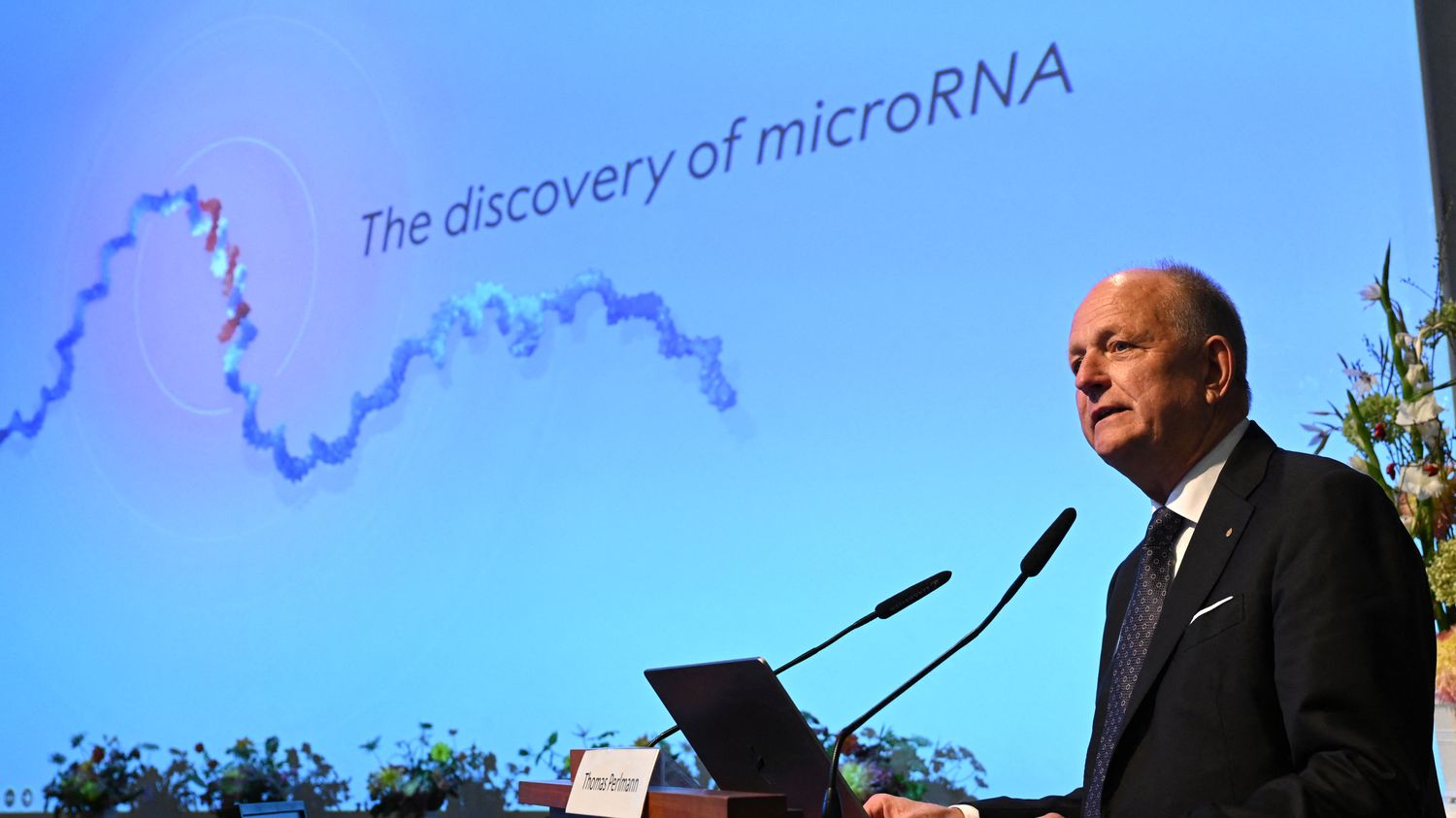The Nobel Assembly, which awards this prize, rewarded two American researchers on Monday for their work on microRNAs and their role in the genetic expression of our cells.

Published
Updated
Reading time: 4 min

They are “of fundamental importance for the development and functioning of organisms.” MicroRNAs and their role in the genetic expression of our cells are at the heart of the work for which American researchers Victor Ambros and Gary Ruvkun were awarded the Nobel Prize in Medicine on Monday October 7. “Dysregulation of gene regulation can lead to serious diseases such as cancer, diabetes or autoimmunityexplains the Nobel committee in its press release. This is why understanding the regulation of gene activity has been an important goal for several decades.”
The Nobel Assembly of the Karolinska Institute, which designates the winner of the medicine prize under the aegis of the famous Swedish committee, has thus rewarded for the second consecutive year work concerning RNA. In 2023, she dedicated the advances of Hungarian researcher Katalin Kariko and her American colleague Drew Weissman in the development of messenger RNA vaccines, decisive in the fight against Covid-19. To better understand what microRNAs are and how their discovery has shaken up science, franceinfo interviewed Vincent Prévot, research director at Inserm.
Franceinfo: What are microRNAs, at the heart of the work awarded the 2024 Nobel Prize?
Vincent Prévot : MicroRNAs are RNA sequences which, unlike other populations of RNA (such as messenger RNA), will not be translated into proteins in the cell. These are very small fragments of RNA which bind to messenger RNA to control their expression.
To summarize, let’s say that DNA is a kind of book and that RNA is a sentence that you have to copy by hand, which will then be translated into a protein. These proteins are the molecules that will allow chemical reactions and the cell to produce what it needs to produce. If we compare a cell to a factory, proteins are the workers who will allow it to produce what it needs to produce. In this process, microRNAs are there to regulate the birth of workers.
How is the discovery of microRNAs important for science? ?
This discovery has enabled important technological innovations, giving researchers the possibility of manipulating the expression of genes, but also of generating new gene therapies, aimed at controlling the expression of genes in certain diseases. These microRNAs are also increasingly used as biomarkers, the measurement of which in biological fluids such as blood constitutes an indicator of the presence or absence of a pathology, or of its severity. They can also help determine your prognosis.
This is the case with a saliva test deemed promising by the High Authority of Health which makes it possible to detect if a patient has endometriosis…
In the case of endometriosis, it is interesting, because there are several types, and in some cases it causes infertility. The presence of certain microRNAs will make it possible to identify the presence or absence of endometriosis, its severity or the risk for the patient of having pain during an attack.
We can use these microRNAs for lots of things! Many researchers are trying to see if they can be used to detect different forms of obesity or metabolic diseases. MicroRNAs are also widely studied in neurodegenerative diseases such as Alzheimer’s disease.
Already in 2023, the Nobel Prize in Medicine rewarded researchers Katalin Kariko and Drew Weissman for the development of messenger RNA vaccines, decisive in the fight against Covid-19. How can we explain that work concerning RNA is particularly rewarded?
RNAs are very interesting molecules for manipulating the expression of genes in our cells. Initially, we put a lot of hope in DNA and we thought we could cure all diseases by sequencing our genome. But over time, we realized that in fact, gene sequencing is not really what differentiates human beings from each other, or even species from each other (knowing that chimpanzee DNA is 98 % similar to ours).
So we said to ourselves that there was something else that should differentiate us, like the different kinds of RNA, and in particular microRNAs. Each microRNA binds 100 messenger RNAs, and each messenger RNA is the target of 100 microRNAs. By expanding the combination of possibilities, through this network that they form with messenger RNAs, microRNAs make it possible to exponentially increase the fineness of the control of the expression of our genes.
